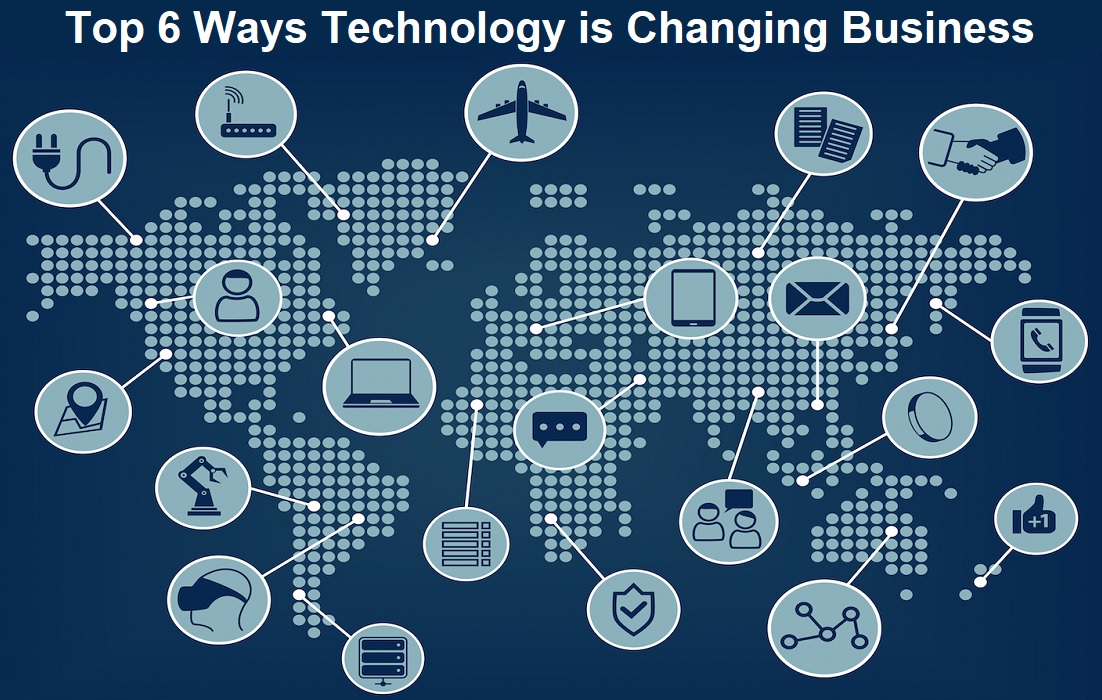Technology is fast evolving. In business, those who fail to adapt to new technological advances are finding they are falling behind. The ability to innovate and use it to your advantage can be the difference between competing successfully in the market and failing.
As a savvy businessperson, you need to understand how technology affects your business. Used in the right way, it can eliminate a lot of daily problems, transform routine workflows, and significantly improve your company’s overall output.
As technology is changing so fast, it’s important to keep abreast on the latest trends within your industry. This enables you to make better informed decisions about what you can integrate into your systems to yield greater efficiencies. Below is a rundown of six key ways that tech is changing business as we know it.
Top 6 Ways Technology is Changing Business
1. Information sharing and communication
Businesses rely on quick and accurate communication and information sharing between senior management and their teams. In recent years, technology has made communication easier, faster, more secure, and more efficient. So much so that companies like Jobber have developed all-in-one business management suites that act as complete communication hubs as well as functioning across a multitude of other operational areas.
In this way, customers buying experiences can be personalized, enabling busy companies to add a very real human touch to how they conduct business which is hugely advantageous when it comes to fostering great customer relations.
2. The rise of paperless offices
You are in the minority if you are still running your operations on printed documents. This resource-heavy way of doing business is fast disappearing and with good reason, as it’s so demanding of both materials and time. Online-based information can be accessed by anyone in the organization instantly and doesn’t get subjected to being damaged or lost.
Changes and amends to online documents can be easily tracked for version control and digital forms such as this commercial cleaning estimate template for example, can be repurposed again and again for repeat requests. By being smart with your internal systems you can operate more profitably and professionally, increasing your chances of winning more business as a result.
3. Remote working
Technology has reshaped the modern workplace through teleconferencing, remote working, and co-working spaces. You can use internet-capable devices and service models to connect to the workplace. Notably, cloud technology has untethered the workplace, enabling you to access work documents and tools from anywhere.
Because of this, workers can achieve a better work-life balance and reduced stress levels, improving their productivity. It also saves time and money that would've been wasted on commuting, especially for those living in cities with heavy traffic congestion.
4. Cost management
Innovative software solutions could be the key to helping your business cut down on costs. Software as a service (SaaS) eliminates the need to buy and install software on individual computers. Instead, you pay a subscription to the software, allowing you to access the software online via a subscription. This is cost-effective, since you don't have to invest in expensive servers to run heavy programs.
Technology also enables you to outsource some business functions you can't work on in-house. This saves you the money you'd have used on salaries, benefits, and office space for full-time employees.
5. Increased collaboration
Often these days, a team member might not be physically present in the office. Traditionally, this would have meant having to pause any collaborative efforts, however, technology has meant that this no longer applies.
Tools like Slack, Google docs, and OneDrive allow your team to readily share files and work together on projects no matter their respective locations. Real-time access to projects by various groups ensures projects are done on time, efficiently, and on budget.
6. Boosted productivity and efficiency
The use of robots and automation of business processes has made organizations more productive and efficient in their tasks. These automated solutions can handle basic processing, data entry, and other workflow tasks. Aside from being capable of operating 24/7, automation also helps reduce the risks of problems caused by human error, as automated tasks are programmed to be more accurate. This not only helps prevent losses, but also speeds up certain operations.
Conclusion:
Technological advancements have made business processes highly streamlined and integrated. By keeping up to date with these changes and advancements you put yourself in a stronger position to ensure constant profitability, security, and productivity improvement. Keep yourself updated for the latest developments and adopt new technology that benefits your operations. In doing so, you will position yourself with a competitive advantage over your peers, securing better revenue and bigger profits.








COMMENTS